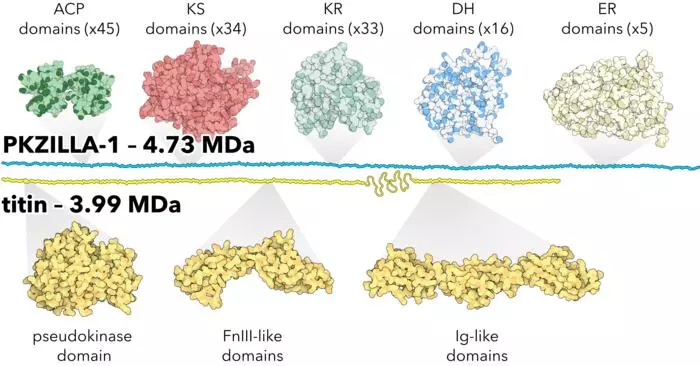Scientists have discovered the largest known protein in biology. Given the fun name of PKZILLA-1, the protein was found in algae cells and helps them make toxins that are responsible for mass killings of fish.
Most proteins in nature are a few nanometers (nm) long, and have masses of about 50 kilodaltons (kDa) on average for complex organisms. But the newly discovered protein is an absolute monster in comparison: PKZILLA-1 can reach up to 1,250 nm long and tips the scales at 4,730 kDa. That means it comfortably steals the crown from the previous record-holder – a human muscle protein called titin, which measures up to 1,000 nm and 3,990 kDa.

“This is the Mount Everest of proteins,” said Bradley Moore, senior author of the study. “This expands our sense of what biology is capable of.”
The huge new protein was discovered in a common algae known as Prymnesium parvum, or golden algae. PKZILLA-1, along with a smaller-but-still-relatively-giant protein called PKZILLA-2, were found to help the algae produce a toxin called prymnesin. This toxin has been linked to mass fish die-offs whenever golden algae blooms in a waterway.
The PKZILLA proteins are actually enzymes, so they produce the toxin through a series of chemical reactions. That chain reaction is also quite long, it turns out – the team found that between the two PKZILLA forms, 239 chemical reactions play out to produce prymnesin.
Uncovering this process could help scientists develop more accurate tests for golden algae in waterways, as well as inspiring new ways to make complex chemicals ourselves.
“Understanding how nature has evolved its chemical wizardry gives us as scientific practitioners the ability to apply those insights to creating useful products, whether it's a new anti-cancer drug or a new fabric,” said Moore.
The research was published in the journal Science.
Source: UC San Diego via Phys.org




